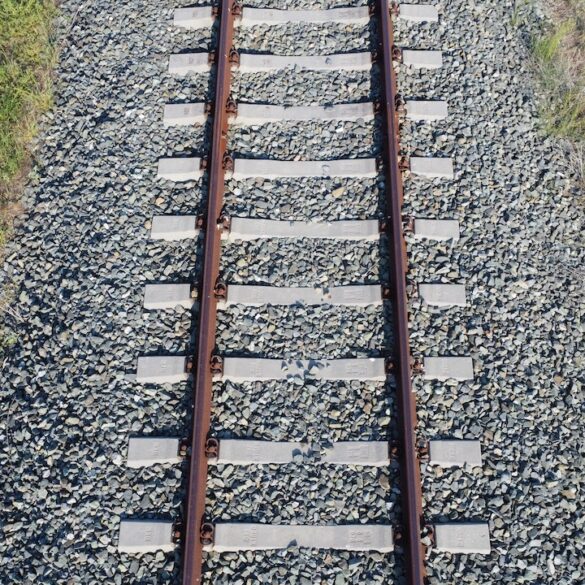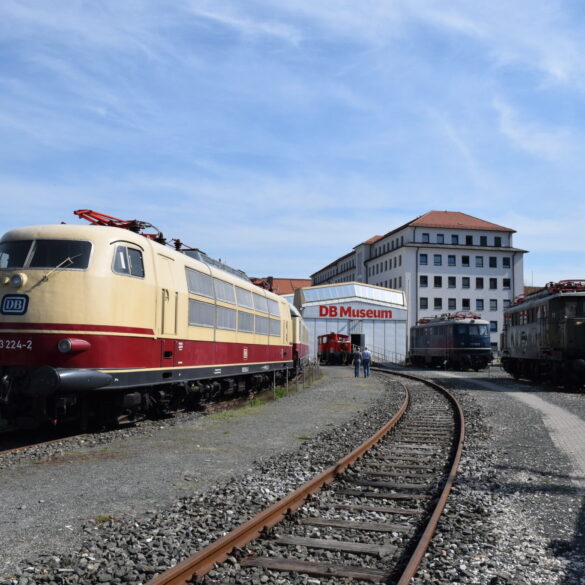In 2022 my #CrossBorderRail project was mostly live tweeted. But then Elon Musk broke Twitter, and I have had to work out how to revise my digital communication strategy for the 2023 project. This blog post explains how I intend to do it!
But before I start, a word about the pre-requisites.
On each day of #CrossBorderRail I produce a lot of content – videos to start and end each day, text about what I observe, and photos and videos from the three devices I have with me (iPhone, SLR camera, drone). But during the days of the project my time is extremely limited – so my daily workflow has to be as swift and seamless as possible. However I know before the project starts where I am going to be going, when, and how many days my project is going to last – so I can pre prepare as much as possible. Also – from an ethical point of view – I am going to make the most use of decentralised and open source tools I can – but if commercial tools can fill some of the gaps I am fine with that too.
It all starts with this website – it is powered by WordPress, and is self hosted. In comparison to using the more restricted WordPress.com it gives me a lot more control.
Each day of the project is going to have a dedicated Live Blog – a Post in WordPress. You can see roughly what these are going to look like here – I tried a test live blogging day earlier this month. Each Post is pre-prepared (including with a title and cover image), and is timed to go live at 2am on the day that live blog is going to be needed – this is a standard WordPress function.
Each Live Blog is composed of 5 items: Text updates, Summary videos, Latest photos, Today’s background and Today’s route.
Text updates was the hardest to get right. Here I wanted the toots I write throughout the day on Mastodon (my main Twitter replacement) to appear as text updates on the Live Blog. This is accomplished using a RSS feed of toots – just put .rss at the end of a username to get this feed. So for example I am https://gruene.social/@jon and the RSS is https://gruene.social/@jon.rss
But it’s not so simple. The RSS feed of toots has no titles, just description text (a blog post RSS has both). And how can I manage to make sure only the toots from the right day come into the Live Blog. Here the freemium plugin Super RSS Reader largely did the job I needed – the Pro version for $25 has text based filters of RSS feeds, although not a date based filter. After a few hours messing with the PHP code I managed to get a filter by date (simply “11 May”, “12 May” etc.) to work. Were you to need something more advanced then more coding work would be needed – but as I have a Live Blog per day this was enough for me. The 20 latest toots from the correct day will go into the Live Blog – automatically. I needed to write some CSS as well to make it all look passable, and add a Javascript Refresh Page button to the Live Blog as well.
After a day is complete I am going to have to go back to previous live blog pages and add links to Mastodon threads directly – but I can do that after the project is done, and that’s OK.
Having accomplished that for Text updates, doing similar for Summary videos was simple – for this I am going to be putting videos on Mastodon’s ActivityPub based video tool cousin, Peertube – and urbanists.video were kind enough to give me an account for that, and Peertube channels have RSS feeds. So two videos – the ones to start and end the day – will automatically appear on the live blog pages. Also videos on Peertube are supported by Mastodon, and so can play directly in toots (unlike Youtube videos).
Occasionally throughout the project – most notably in Kiel and Hamburg at the start – I am going to need to Live Stream events. This I am going to do on Youtube (streaming onto my channel) – simply so as to not over-burden a volunteer-run Peertube instance with hours of video.
Latest photos rely heavily on Flickr (my account is here) – a commercial service where I have a Pro account. I have stuck with Flickr for two reasons: its excellent integration of Creative Commons licenses, and on my MacBook and iPhone simple workflow to upload images. A Flickr Album for each day of the trip has been pre-prepared, and all I need to do is drop images in the relevant folder on my Mac and that album will fill. I am using the Phototonic Gallery plugin for WordPress to bring these photos into the Live Blog each day. There might, theoretically, have been a RSS-based way to do this, but Phototonic Gallery gives me better control of how the images are presented. The enshittification of Instagram has now gone so far I see no viable way to use it in this project, although I have not yet closed my account there.
Today’s background and Today’s route are simple – these are images and text, directly in the WordPress post. Each route screenshot is accompanied by the link to the zoomable uMap of the whole project. You can find out more about the mapping tools I use here.
But what about informing people about the Live Blog? For many years I have been using a Mailchimp newsletter to inform people about new posts on my blog – and this system will notify my subscribers about the Live Blog automatically each morning at 8am, basically when there will already be some content! (#CrossBorderRail days start early) You can sign up for these notifications here.
Anyone who follows me on Mastodon is going to see a lot of content from my project anyway, and that then means the final thing to do is a single daily post each morning on LinkedIn, Facebook and (dare I?) Twitter, linking to the Live Blog.
So that then is the technical setup. I hope writing this up is useful for people, and from 2nd May we will see how it all works!

